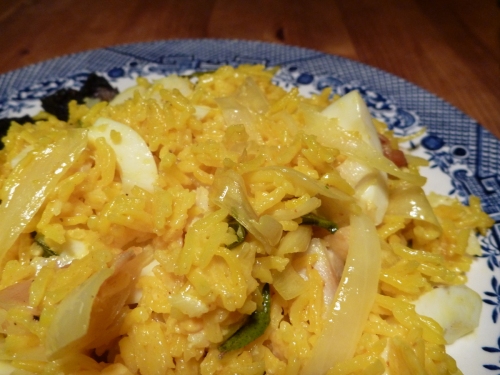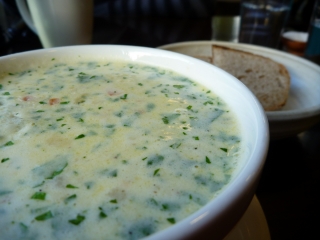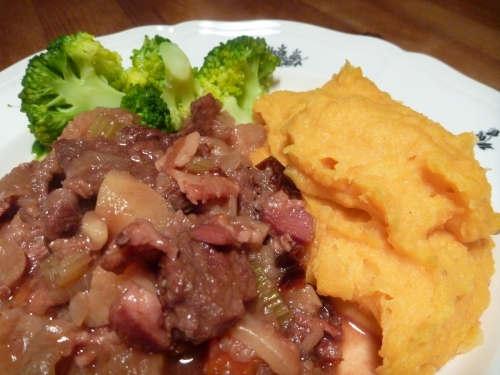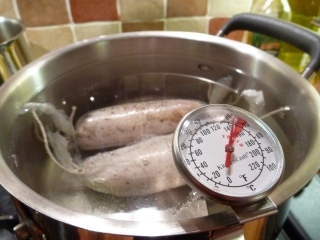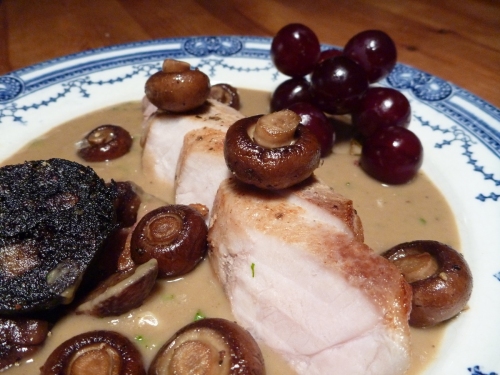I had a fit of food rage today, a wee glimpse of the kind of stress that causes top chefs to bawl out their sous and spank their commis with ladles. Well, I managed to screw up boiling a couple of eggs for gawd’s sake! As Maureen so poignantly put it on Twitter: “should you be writing a food blog?”
I always use hard-boiled eggs for kedgeree, but I thought this time it would be nice if the yolk was still a tiny bit squishy. You know, just perfect. I’ve no idea how I got the timing wrong. Stupid water was probably boiling at under 100C or something! You know, like it does sometimes. Ahem. Anyway, the stupid egg just would not peel, even the tiniest bit of shell came off with a huge lump of white. The yolk was totally liquid, burst in the struggle and poured all over my hand. The second egg was exactly the same, of course. I gave an inarticulate scream of rage and flung it full-tilt at the sink. Massive, massive splatter. Everywhere.
So I took a deep breath, boiled two more eggs properly, and the kedgeree was delicious anyway.
As a complete aside, if you’re going to soft-boil eggs you probably want to use older ones, perhaps a couple of weeks. Really fresh eggs is what causes sticking-to-the-shell issues.
Kedgeree (serves 2)
3 tbsp whisky
2 bay leaves
1 onion
2 eggs
80g rice
½ tsp turmeric
2 small tomatoes
tabasco sauce
3 tbsp cream
25g butter
black pepper
fresh parsley
- Buy as much fish as you’d have for an ordinary fish supper. Get a big frying pan on the hob, put in the bay leaves, whisky and a cup-or-so of water.
- Slice the onion, then toss the top and tail of it into the pan along with a couple of slices and bring it to a simmer. Poach the fish, covered, until it is gently cooked through. I find it is between 6 and 10 minutes.
- Meanwhile hard-boil the eggs, then set them aside.
- Now that the fish is done, cook the rice using the water leftover from the fish poaching along with half of the turmeric. You may need to top up the water if it’s not enough.
- While the rice cooks, peel and chop the eggs. Also flake the smoked haddock, getting rid of the skin and any bones you find. Fingers are definitely the best for finding bones.
- When the rice is nearly done, start gently frying the onion in a knob of butter. As it softens, add the rest of the turmeric and a good lot of ground black pepper.
- Finally, add the sliced tomato. After a minute more, add back the fish, the egg and the rice. A dash of tabasco sauce, the cream, the butter. Mix everything, then put the lid on and leave for two minutes.
- Serve hot, garnished with chopped parsley.
You shouldn’t need to use salt, as the smoked haddock provides plenty, but check your seasoning of course just in case. We usually have this for supper with absolutely nothing else, but it’s good with soft white buttered bread, or with some black pudding on the side.







